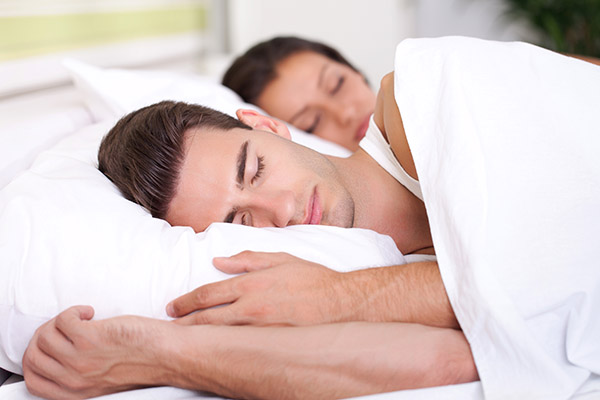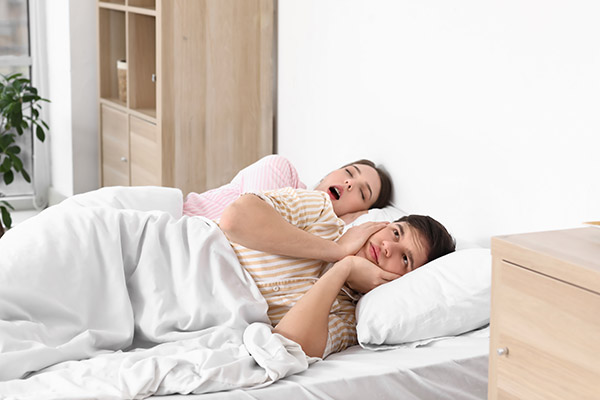 Invisalign® treatment demands wearing the aligners for at least 22 hours a day. Read on to learn more about what it is like to sleep while wearing Invisalign aligners. The only time you should take your Invisalign aligners out of your mouth is to eat, drink anything other than water, and brush your teeth. That implies that you need to wear the Invisalign trays at night while sleeping to achieve correct tooth alignment. It may feel strange sleeping with a foreign object in your mouth at first, but it will soon become second nature, and you will fall asleep as effortlessly as you did before the teeth straightening treatment started.
Invisalign® treatment demands wearing the aligners for at least 22 hours a day. Read on to learn more about what it is like to sleep while wearing Invisalign aligners. The only time you should take your Invisalign aligners out of your mouth is to eat, drink anything other than water, and brush your teeth. That implies that you need to wear the Invisalign trays at night while sleeping to achieve correct tooth alignment. It may feel strange sleeping with a foreign object in your mouth at first, but it will soon become second nature, and you will fall asleep as effortlessly as you did before the teeth straightening treatment started.
Adjusting to Invisalign aligners during sleep
Invisalign aligners are made from clear thermoplastic that is almost invisible to the naked eye. They operate by applying pressure to teeth, causing the bone supporting the teeth to react and recede in the correct direction. Bone fills in from the opposite side when the tooth shifts position. This causes the teeth to realign over time.
The mouth may stay slightly ajar while sleeping during the first few nights as the patient acclimates to the aligners, and there could be an increase in nocturnal salivation and drooling. The dentist will recommend sleeping with the head raised and looking upward to reduce this. It helps to keep a glass of water nearby to counteract any dry mouth due to leaving the mouth open.
Looking at the big picture, the increased nocturnal drooling and early pain are minor annoyances, and the beautiful smile that is attainable with Invisalign will make it worth it eventually. Wearing the Invisalign aligners at night will not only ensure proper teeth straightening but will also act as a barrier between teeth, shielding them from the damaging effects of nocturnal grinding. In comparison to metal braces, this protective aspect provides an extra advantage.
Nighttime use of Invisalign aligners
Invisalign works because of the near-constant pressure. Therefore, it is necessary to wear the aligners during sleep. The manufacturers of Invisalign suggest wearing the braces for 20 to 22 hours each day and only removing them while eating or brushing the teeth.
It is not a good idea to remove the aligner trays while sleeping. They will not function as fast if they do not provide continuous pressure. If patients stay too long without using Invisalign, the teeth may return to their original position, and they will have to restart the treatment from scratch.
If patients neglect to wear their Invisalign aligners at night for a few days, such as when on vacation, they may experience pain when putting them back on. This is a common side effect of the teeth moving out of alignment.
Within a few days, the pain should go away. If it does not, it means the teeth may have moved to the point where the Invisalign has to be adjusted. The chances are that the patient will have to go back to a previous Invisalign aligner tray until the teeth adjust again.
In summary
It is important to wear Invisalign aligners for the minimum number of hours recommended. This will ensure treatment progresses optimally.
Request an appointment or call Chesterfield Dentist at 804-412-0867 for an appointment in our Chester office.
Recent Posts
Invisalign® clear aligner trays are not just for adults; teenagers and some children can also benefit from this treatment system. Many teens prefer Invisalign® over traditional braces because of the numerous advantages it offers, including:Discreet treatment appliancesMore comfort throughout the entire processRemovable trays for improved oral hygieneWhile wearing these trays is easy and relatively effortless,…
The teenage years can be awkward, especially for those who have to deal with crooked teeth. Invisalign® presents an alternative to traditional braces, and these clear aligners can have the same corrective impact with less discomfort both physically and socially for a self-conscious teen. The benefits of clear aligners and the ability to correct an…
If you and your child are interested in an alternative to traditional braces, Invisalign® may be just what you are looking for. It is just as effective at straightening teeth as traditional braces but has certain qualities that make it more tolerable for teenagers.It is usually preferable to wait to delay teeth straightening treatment until…


